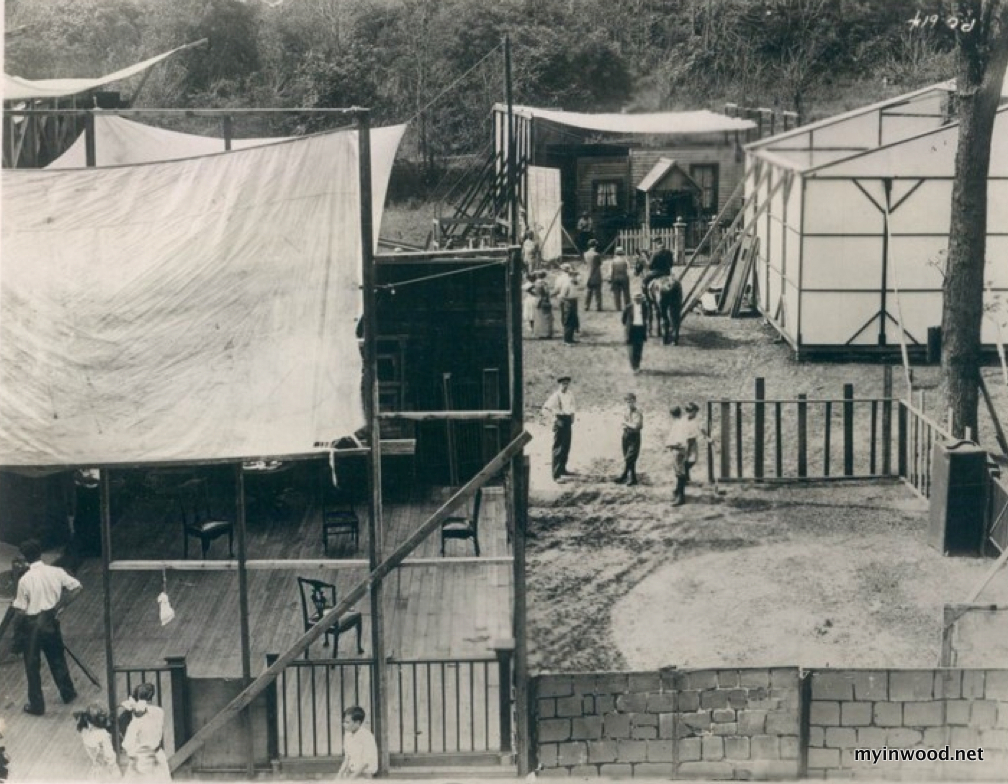
Near the dawn of the Twentieth century, before the motion picture industry moved to Hollywood, New York City filmmakers churned out silent movies from a makeshift studio atop a boiler factory on West 56th Street and Eleventh Avenue.
The early sound stage of the Independent Motion Picture Company, later Universal, was well-suited to interior shots– but when producers needed to film a “wild and woolly” western the crew headed to northern Manhattan where the dirt roads, hills and trails could still pass for the American west.
As early as 1909 IMP constructed an outdoor set near Dyckman Street and Broadway.

“With a stock company including Mary Pickford, Florence Lawrence, Owen Moore, Thomas Ince, King Baggott and George Loane Tucker,” one industry writer stated, “they managed to turn out two single reels a day.” (New York Dramatic Mirror, 1917)
“The IMP Studio,” wrote Billboard, “ is located in a new place, near Broadway and Dyckman Street, New York. The new studio is of the open-air type, and through the summer months is being utilized to good advantage.” (Billboard, August 31, 1912)
“Residents of the northern end of Manhattan,” a reporter later opined, “perhaps would scoff at the suggestion that less than two decades ago their neighborhood had a touch of frontier life with cowboy and Indian costumes to be seen there. Nonetheless, one of the earliest exterior locations for motion pictures was a place known as Dyckman’s Hill, where western thrillers were ground out.”
“A handicap was the Broadway streetcar lines,” the account continued. “The trolley poles of that time, tradition has it, were hidden behind teepees or by some other artifice. But the cars had a habit of getting within the camera’s scope and there was no way to camouflage them.”

Witnesses to this pioneering uptown film set claimed that silent star Wallace Reid, described as the greatest on-screen lover of all time, was discovered on the Dyckman Street movie lot. “It was his duty, according to legend, to watch for approaching cars and warn the director so the latter could halt activities while they passed.” (Daily Sentinel, February 14, 1927)
Within years apartment buildings covered the old movie lot. The moving picture folks briefly set up shop across the Hudson River in Fort Lee, New Jersey before relocating to California.

In 1912 Independent Moving Pictures was sold to the Universal Film Manufacturing Company.
IMP’s matinee idol, Wallace Reid, described by Cecil B. DeMille as a “180 pound diamond,” succumbed to morphine addiction in 1923. He was 31.
The post Hollywood on the Hudson: Early Uptown Westerns appeared first on | My Inwood.